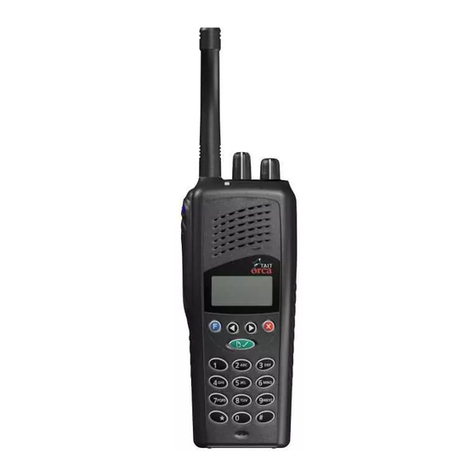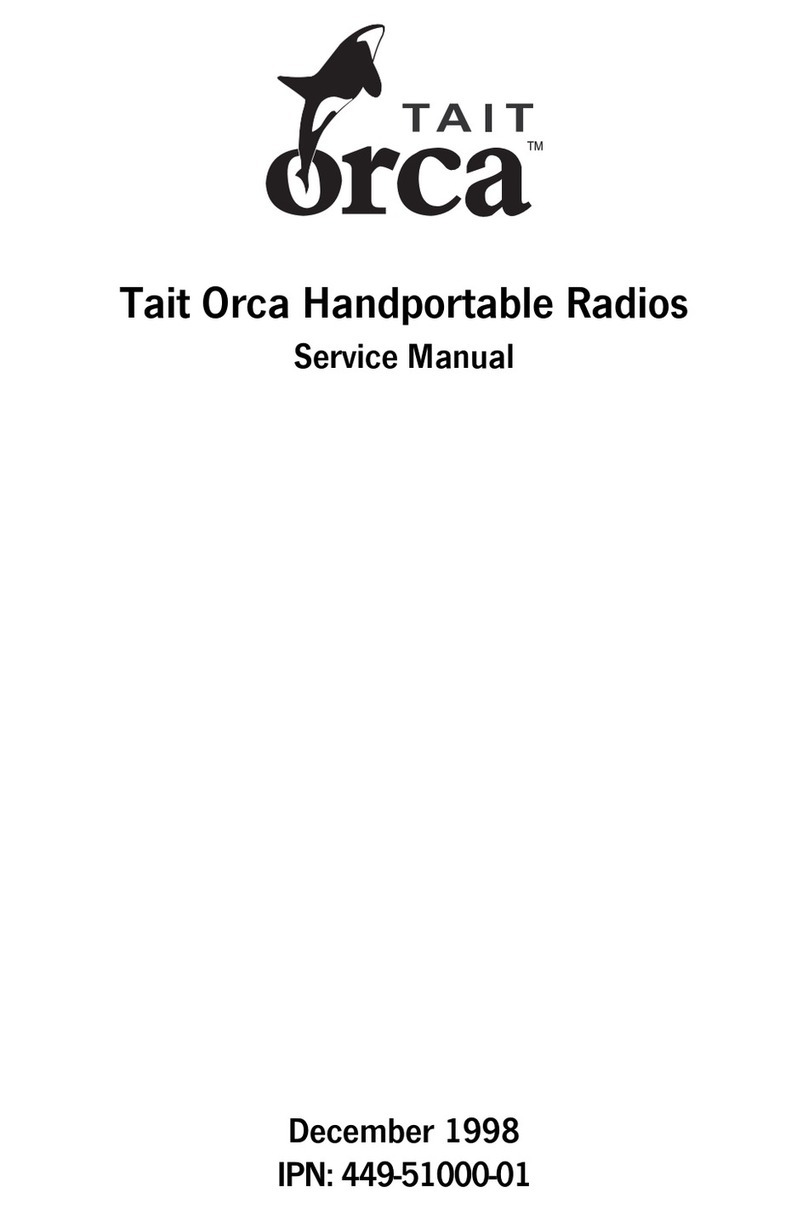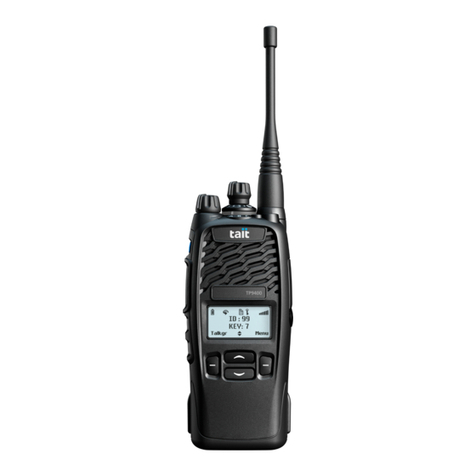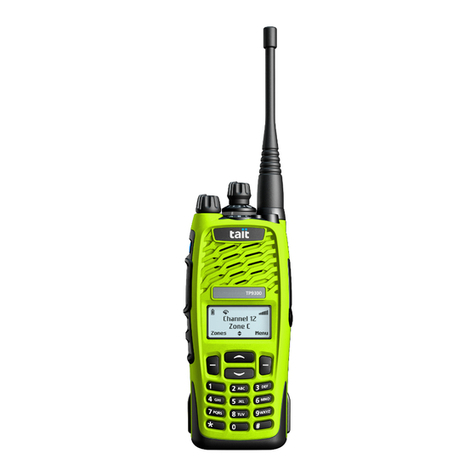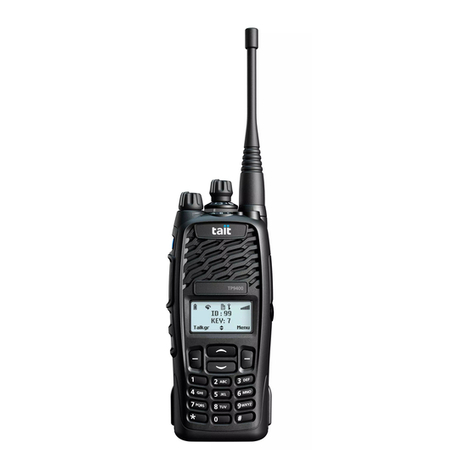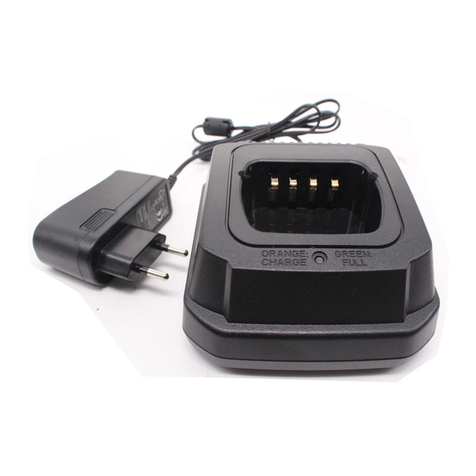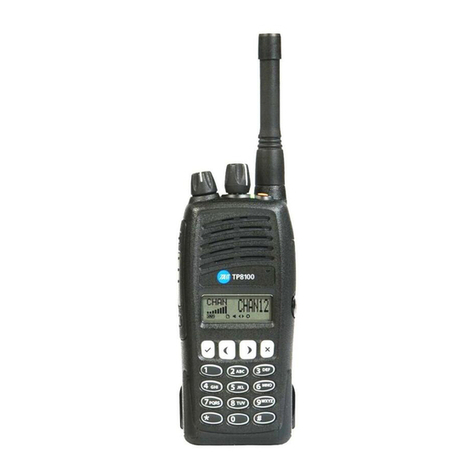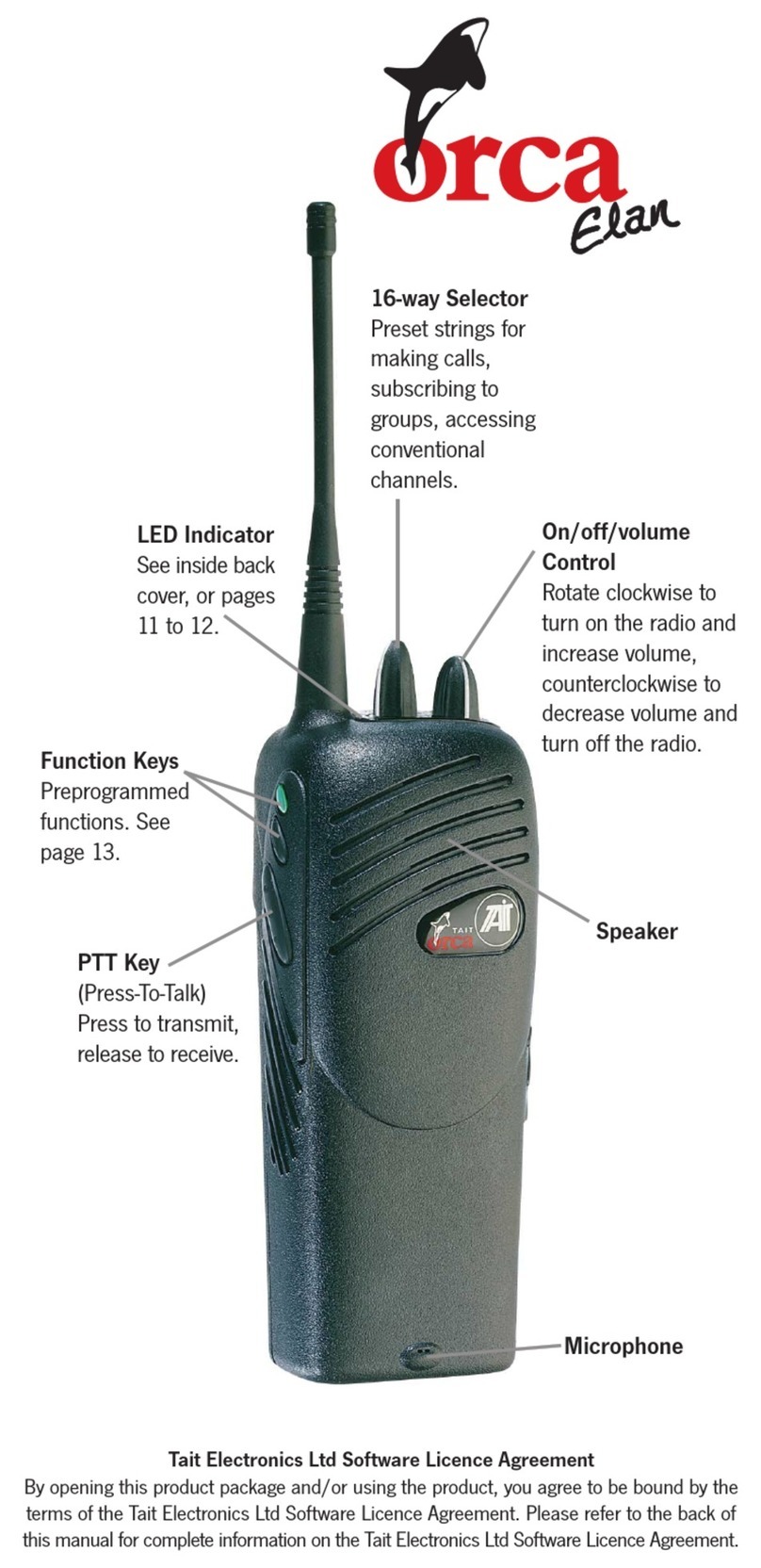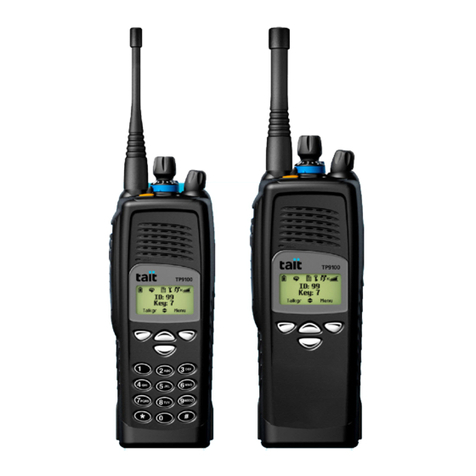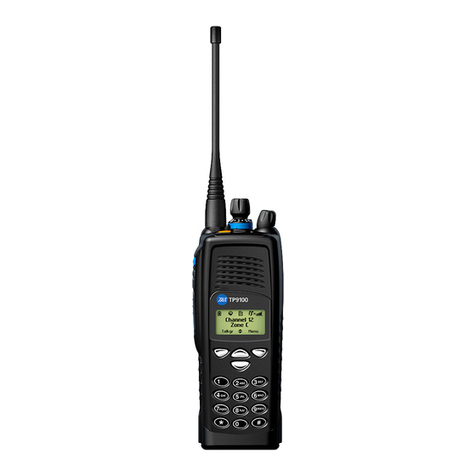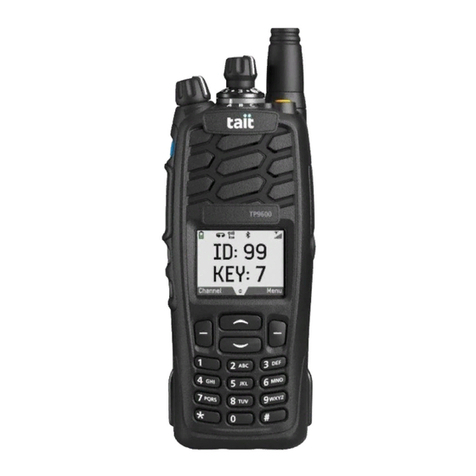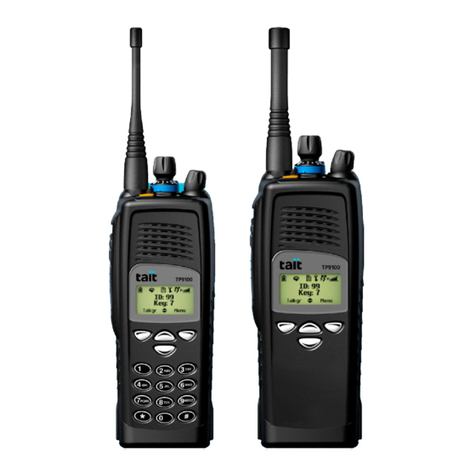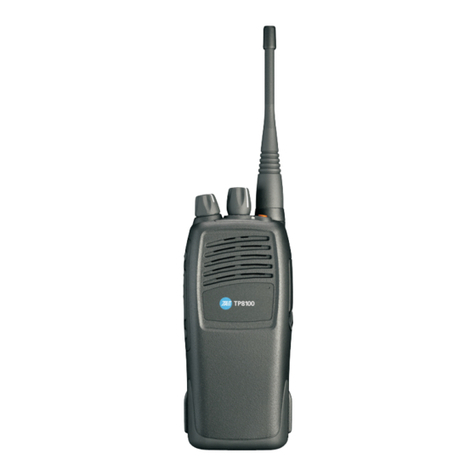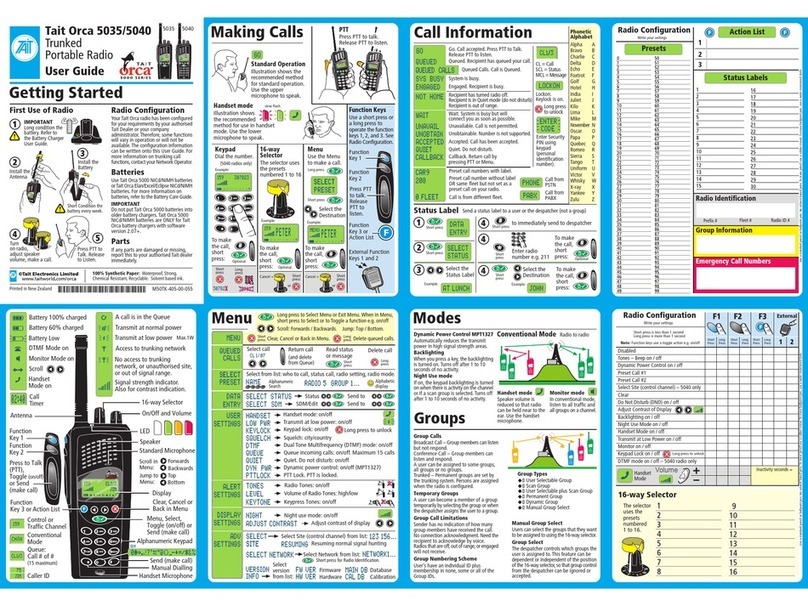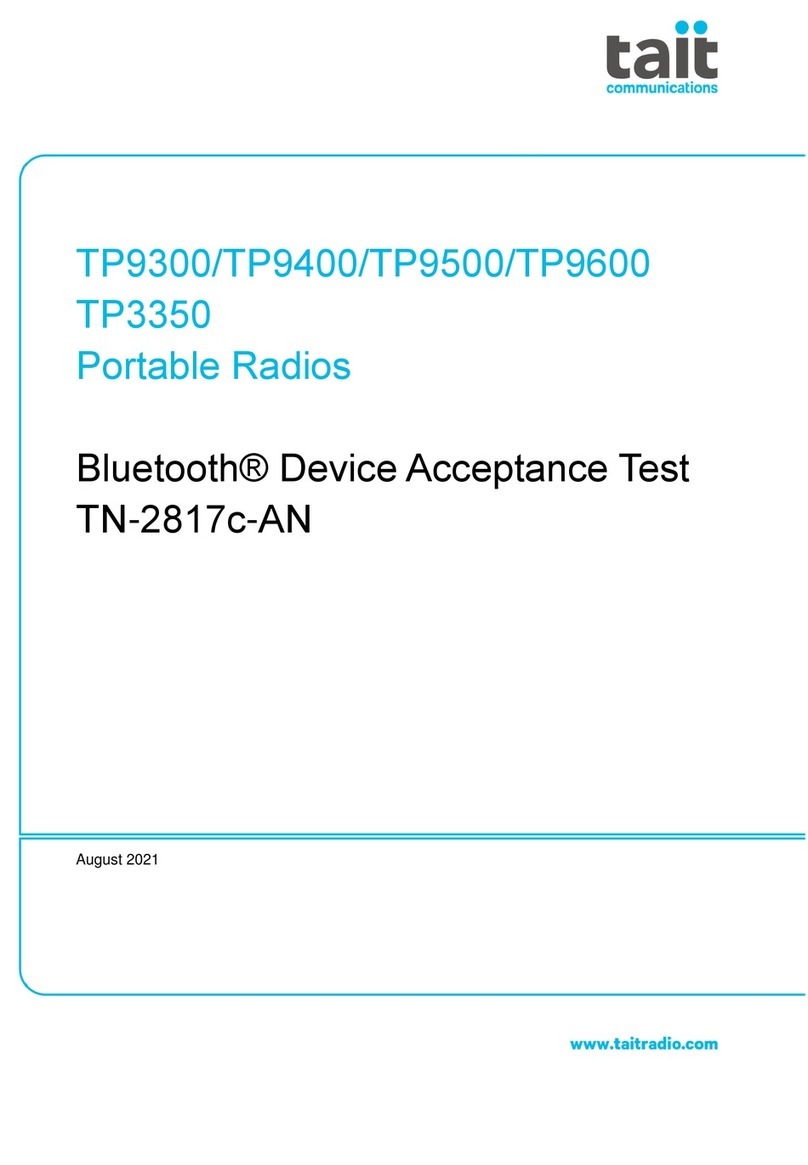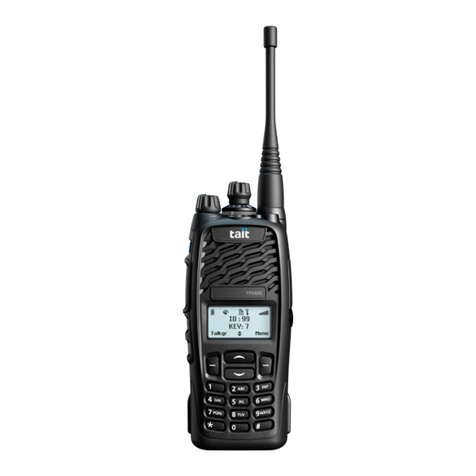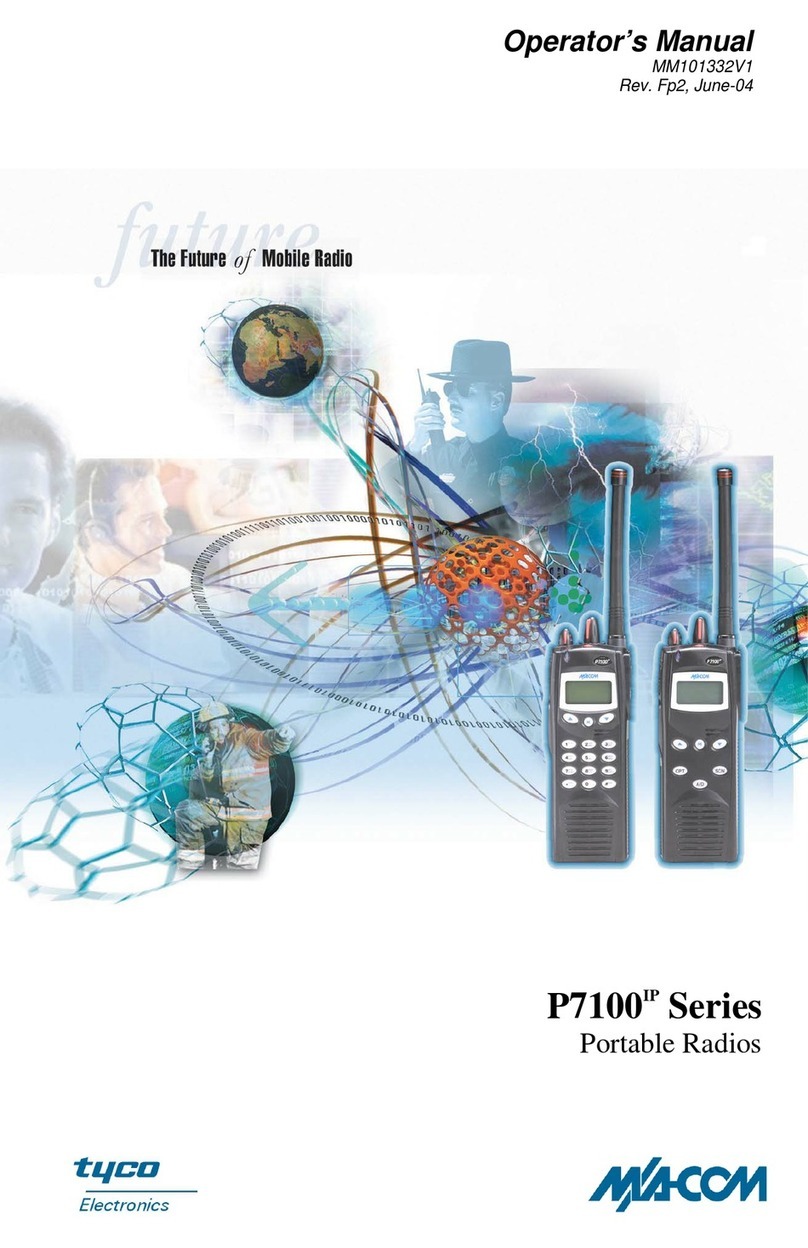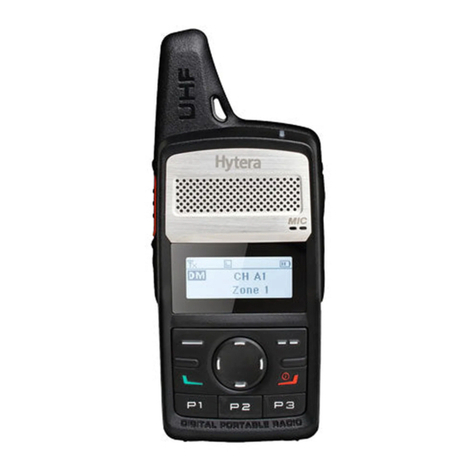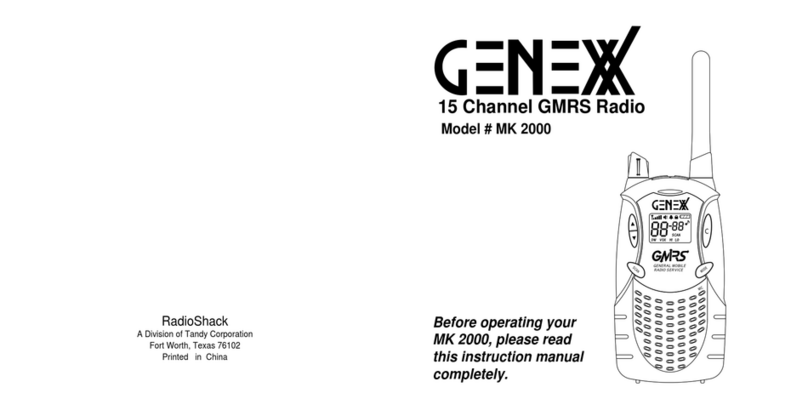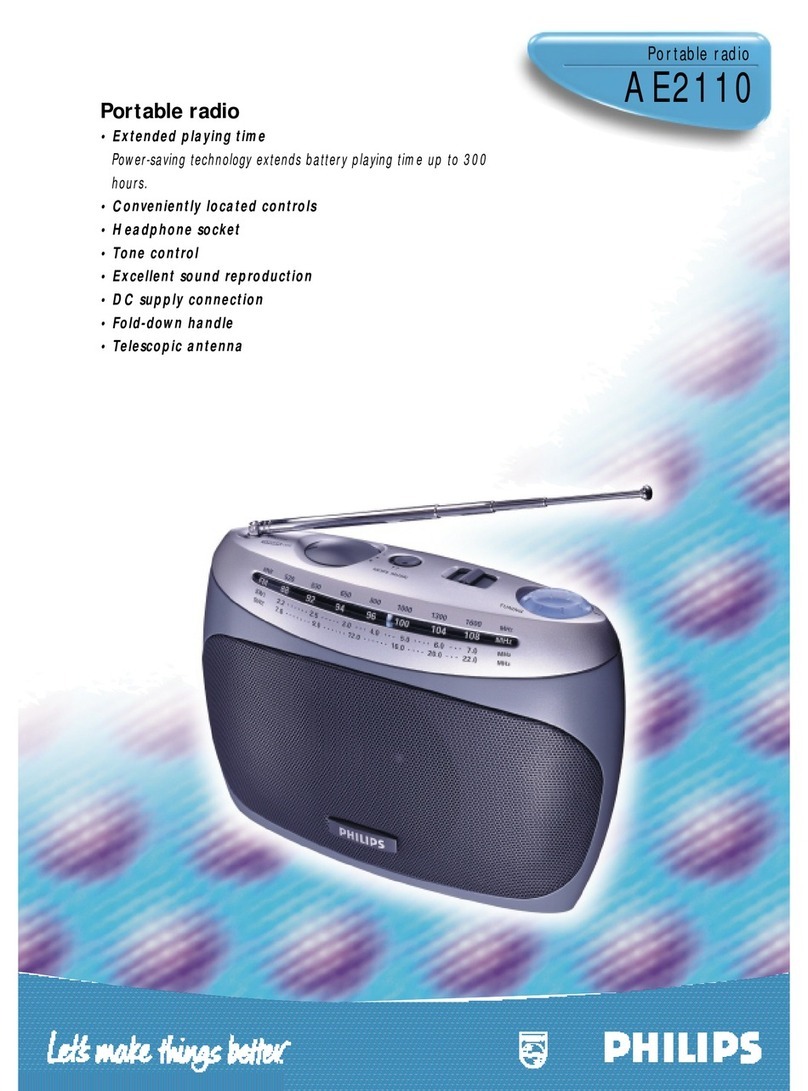Batteries
NiCd batteries are the preferred choice for shelf life, service life, high transmit duty cycles,
extreme temperatures and general use. NiMH Batteries are best suited to low transmit
duty cycles. We recommend the use of a battery analyser to monitor the performance of
batteries. Note that different analysers produce different results.
Battery Safety
Do not install, remove or replace batteries in hazardous atmospheres as an explosion or
fire could occur, even if the radio is qualified for use in such environments.
Battery Shift Life
Battery shift life is affected by many factors. For example:
u Trunked radios will generally use more power than conventional radios.
u 1500mAh is the minimum recommended battery size for trunked radios.
u A radio on standby will use less power than a radio that is used regularly.
Battery Service Life
u Battery service life is ultimately reduced by the number of charges and discharges, and
the way it is treated.
u Batteries can typically have a longer service life if there is some residual charge remaining
after every shift prior to recharging, and if the battery is short conditioned every week.
u Although important for battery maintenance, long conditioning and short conditioning
affect the battery service life, and should therefore not be done more frequently than
recommended.
Battery Storage
u If storing the radio for long periods, remove the battery to ensure no power loss.
u For best results, discharge the battery until the ‘low battery’ warning is given.
u NiMH batteries can typically be useless after 2 years of storage at room temperature.
u Store batteries in a cool and dry location, away from direct sunlight.
u Long condition the battery after storage.
Charging Batteries – Tait Orca 5000 – IMPORTANT
Do not put Tait Orca 5000 batteries into older battery chargers such as the ‘green button’
models. Tait Orca 5000 NiCd/NiMH batteries are ONLY for battery chargers with software
version 2·07+.
Charging Batteries – Tait Orca Elan, Excel and Eclipse
All Tait Orca batteries (TOPB100, TOPB200, TOPB400, TOPB500, TOPB600, TOPB700) are
compatible with Tait Orca radios and chargers (software version 2·07+). However, care
needs to be taken to ensure appropriate choice of belt clips and carry accessories.
Battery Performance
Note: Excessive short and long conditioning will reduce the life of the battery. Follow these
recommendations to maintain the optimum performance of the battery:
u Charge the battery as soon as the radio gives the ‘low battery’ warning.
u Short condition the battery weekly.
u Long condition the battery only for the following reasons: on first use of new battery,
if performance is poor, and after more than two weeks of storage.
u Do not charge a charged battery that has had little or no use.
u Do not leave charged batteries in the charger for more than a day.
u Turn the radio off when it is unattended for long periods.
u Clean electrical contacts of the battery and charger weekly using a fibre glass pencil,
or the graphite tip of a type 4h (#4) or harder pencil.
u Use only batteries that are approved by Tait Electronics Ltd.
Battery Temperature
u Temperatures below –20ºC (–4ºF) will permanently damage NiMH batteries.
u NiHM batteries are not recommended for temperatures below 0ºC (32ºF) or above 40ºC
(104ºF).
u NiCd batteries are more resistant to very warm and cold environments compared with
NiMH.
Battery Recycle
Recycle batteries that are
of no use.
Contact your authorised
Tait dealer for advice.
Earphones,
Palm
and Lapel
Microphones
Battery
Charger
6-Way
Multi-Charger
Battery
Antennas
Accessory
Connector Kits
D-Clip
Leather Carry Cases
Belt Loop
Car Kit
Accessory
Adaptors
Headphones
Servicing and Programming Kits
Speaker
Microphones
Accessories
Contact your authorised Tait Dealer
Carry Case
Belt Loop
Note for Accessories
To use the belt loop,
the accessory needs
the D-clip fitting.
For example: a lapel
microphone.
Remove by
peeling
apart
Install the
Belt Loop
Installing the
Radio and
Carry Case
Removing the Radio
and Carry Case
Rotate
the Carry
Case by
180
degrees
Slide the Carry
Case upwards
Unfasten
the Clip and
remove the
Radio
Install
the clip
Install
the
Radio
Install
the
Carry
Case
Looking after your Radio
u Is the radio turned on?
u Is the correct channel selected?
u Is the battery installed on the radio?
u Is the battery charged?
u Is the antenna damaged?
u Is the battery charger working properly?
Checklist
Trunking Mode
Trunking System Controller
Making
a Call Receiving
a Call
free Traffic Channel is selected
John
Sam
Press PTT to accept
call if FOACSU.
Sam
Traffic Channel is allocated
John
Control
Channel
Press PTT to talk. Release PTT to listen.
Select number
Make call: press PTT
PABX PSTN
Trunking Site B
Telephone Landline
OACSU – on air-call setup
FOACSU – full off air-call setup
Call is
repeated by
transmitter or
landline
Group call
Radio to
radio
Radio to
or from
PABX/PSTN
Trunking Site A
Performance
To maintain the optimum performance of the radio:
u Use only the supplied antenna.
u Use only the radio and accessories for their design purpose.
u Use only accessories that are approved by Tait Electronics Ltd.
u Avoid high temperatures. If the temperature exceeds 80ºC (176ºF) the radio will make
two short high-pitched beeps and will not work.Temperatures above 90ºC (194ºF) cause
permanent damage to the radio.
Trunking System
Troubleshooting
Medium flash. Radio is incorrectly configured. Contact your
authorised Tait dealer or your company administrator.
Battery is low. Charge the battery.
Battery is too low to operate the
radio. Turn off the radio.
Charge the battery.
The temperature is too high. You should stop
transmitting and allow the radio to cool down.
High pitch beep
twice, short duration.
Low pitch beep,
long duration.
Low pitch beep
every 5 seconds. Slow
flash
Batteries
u Your radio does not require routine maintenance. However, it is a
sophisticated electronic device and should be treated with care.
uClean the radio, accessories and charger weekly using a clean dry lint-free
cloth. When cleaning, do not use solvents, detergents, alcohol, aerosol sprays
or petroleum-based products.
u Clean the electrical contacts on the battery and charger weekly using a fibre
glass pencil, or the graphite tip of a type 4h (#4) or harder pencil.
u Do not put the radio and accessories in fluids.
u Do not drop the radio onto hard surfaces, place it down carefully.
u Do not use if the radio, antenna or accessories are damaged.
u Repairs and modifications must only be carried out by a Tait approved dealer.
u Always have the D-Clip or protective cover installed to protect the radio from
dust ingress and electrostatic discharges.
u When transmitting, hold the radio microphone 25–50mm (1–2 inches) from your mouth.
u When transmitting, keep the antenna at least 25mm (1 inch) from any part of your
body, especially your face and eyes.
u Turn off the radio where radio waves could interfere with electronic devices.
u Turn off the radio at fuel/gas stations.
u Turn off the radio in an area where detonators/explosives are being used.
u Turn off the radio before boarding/leaving an aircraft and whilst on board an aircraft.
u Do not use the radio whilst driving vehicles or operating machinery.
u Do not use earphones or headsets at high volume levels.
u Do not transmit in frequency bands used by distress beacons, such as 406–406.1 MHz.
u Do not put the radio, battery or accessories in liquids as they will be damaged.
u Do not allow children to play with the radio; it is not a toy.
Hazardous Atmospheres
A hazardous atmosphere has the potential for fire or explosion from dusts, gases, liquids
and solids. Make sure of the following in hazardous atmospheres:
u Only use approved Intrinsically Safe (IS) radios, batteries and other accessories.
Refer to the service manual for a list of approved items.
u Do not use battery chargers in hazardous atmospheres.
u Turn off and do not use non-approved radios.
u Only use IS batteries with IS radios.
u Do not use damaged or cracked radios.
u Do not modify IS radios.
Electromagnetic Interference
Turn off the radio where radio waves could interfere with electronic devices. Some facilities
use equipment that is sensitive to Electromagnetic Interference such as: hospitals, medical
centres, aircraft and some industrial facilities. Only use your radio in these situations if the
radio is qualified for use in such areas.
Note: The warning below applies to FCC approved radios in 800 MHz and 900 MHz frequency bands:
FCC RF Exposure Limits
This product generates radio frequency energy during transmissions. It is class-
ified by the FCC as suitable for general population use in an uncontrolled ex-
posure environment. The following conditions apply to the use of this radio:
u It must only be used with authorised accessories and antennas.
u Do not exceed a duty cycle ratio of 20% transmit mode to standby or receive modes.
The radio is in transmit mode when the PTT key on the radio is pressed and the TX
indicator LED is lit.
Safety Precautions
Intrinsically
Safe
Accessory Use
Using the
radio, lapel
microphone
and carry
case
Removing
the D-clip
Installing
the Battery Removing
the Battery
SAFETY
Do not use battery chargers in
hazardous atmospheres under any
circumstances.
Only use approved Intrinsically Safe (IS)
accessories with IS radios.
Installing the D-clip
